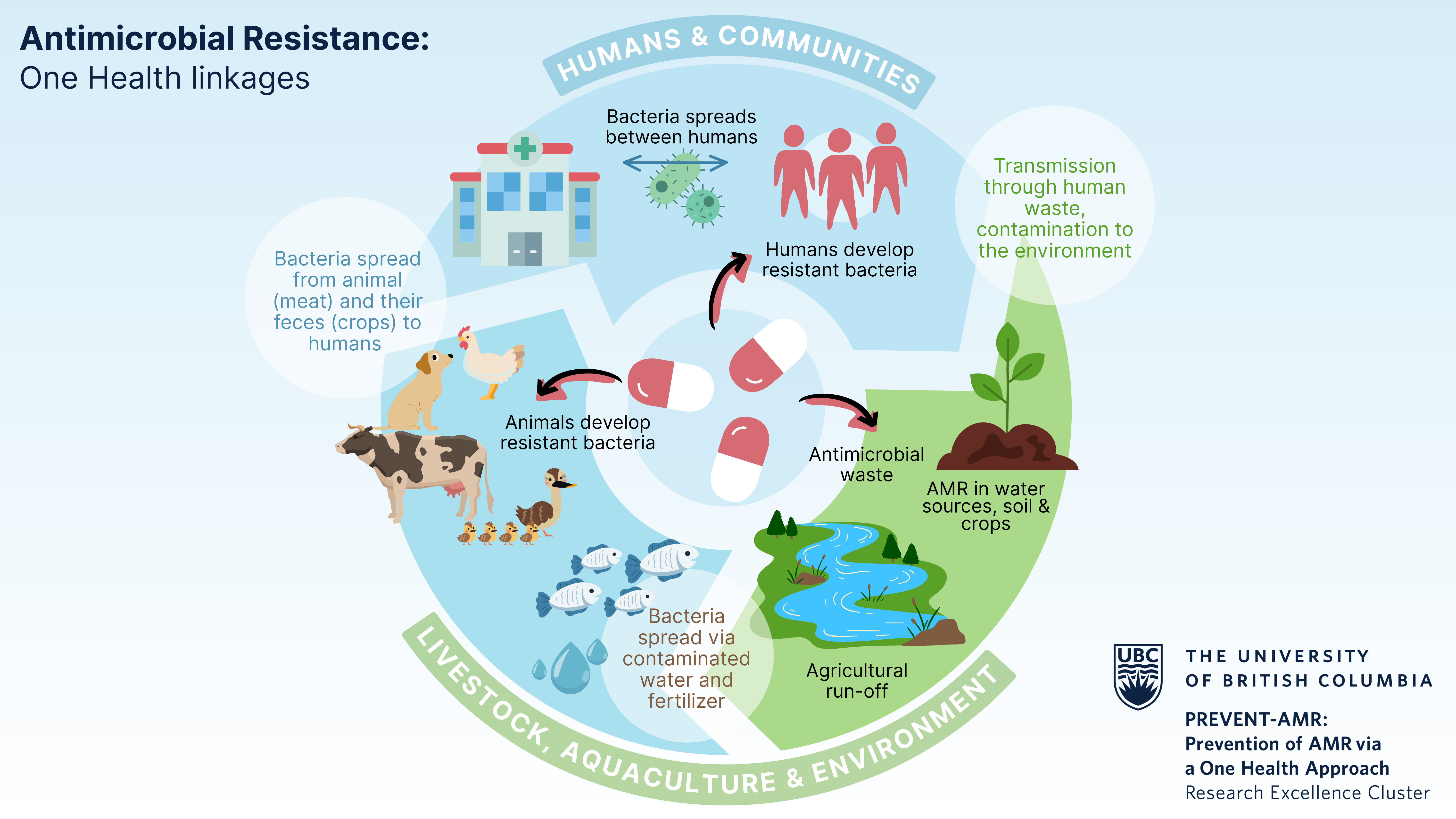Antimicrobial resistance (AMR) is one of the top global public health threats. PREVENT-AMR is an inter-disciplinary research cluster to address the global challenge of AMR through prevention.
What is AMR?
Antimicrobials – including antibiotics, antivirals, antifungals, and antiparasitics – are medicines used to prevent and treat infectious diseases in humans, animals and plants. AMR occurs when bacteria, viruses, fungi and parasites no longer respond to antimicrobial medicines. As a result of drug resistance, antibiotics and other antimicrobial medicines become ineffective and infections become difficult or impossible to treat, increasing the risk of disease spread, severe illness, disability and death.

Figure 1. Representation of the routes of transmission of antimicrobial resistance (AMR). The one health perspective shows how humans, animals and the natural environment are all connected to the issue of AMR.
One Health approach
The ‘AMR ecosystem’ includes humans, animals and the natural environment which are all connected through direct contact, the food chain, and the handling of waste such as manure and pollution. The One Health approach to preventing AMR brings together multidisciplinary partners to collaborate on the design, implementation and monitoring of programs, policies, legislation and research through integrating human, animal, and environmental health perspectives.
Why is AMR a problem?
The rise and spread of drug-resistant pathogens (bugs) threaten the ability to treat common infections and to perform life-saving procedures, such as cancer chemotherapy, caesarean sections, hip replacements, and many other critical surgeries. Drug-resistant infections also harm animals and plants, lower agricultural productivity, and put our food supply at risk.
Source: World Health Organization

